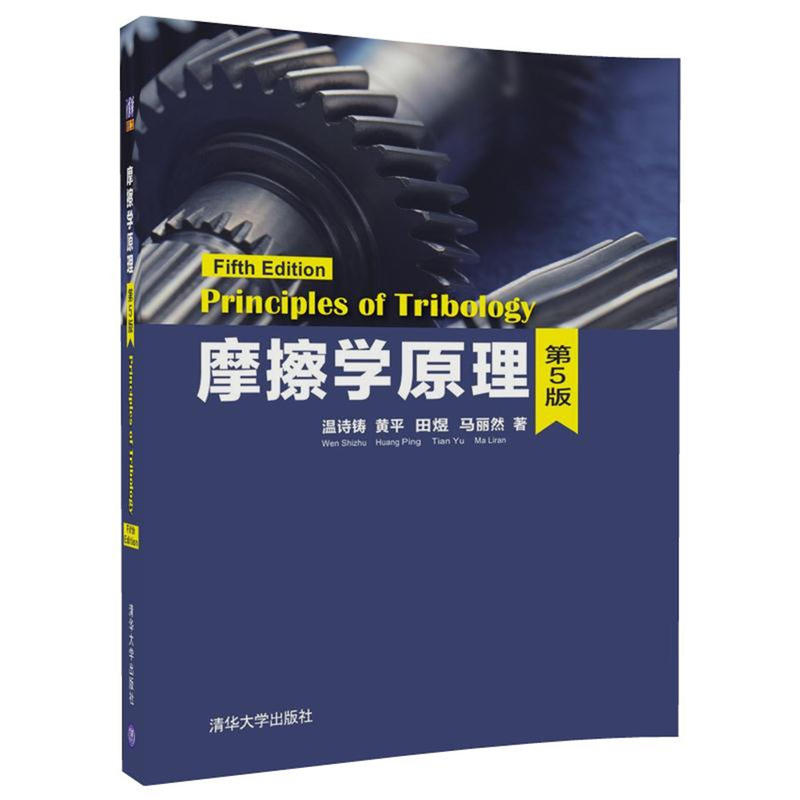
5分
摩擦学原理(第5版)/温诗铸光盘1张

- ISBN:9787302500087
- 装帧:一般胶版纸
- 册数:暂无
- 重量:暂无
- 开本:其他
- 页数:484
- 出版时间:2018-05-01
- 条形码:9787302500087 ; 978-7-302-50008-7
本书特色
《摩擦学原理(第5版)》反映了摩擦学研究进展以及作者和同事们从事该领域研究的成果,系统地阐述摩擦学的基本原理与应用,全面反映现代摩擦学的研究状况和发展趋势。 全书共22章,由润滑理论与润滑设计、摩擦磨损机理与控制、应用摩擦学等三部分组成。除摩擦学传统内容外,还论述了摩擦学与相关学科交叉而形成的研究领域。本书针对工程实际中各种摩擦学现象,着重阐述在摩擦过程中的变化规律和特征,进而介绍基本理论和分析计算方法以及实验测试技术,并说明它们在工程中的实际应用。 《摩擦学原理(第5版)》可作为机械设计与理论专业的研究生教材和高等院校机械工程各类专业师生的教学参考书,亦可供从事机械设计和研究的工程技术人员参考。
内容简介
《摩擦学原理(第5版)》反映了摩擦学研究进展以及作者和同事们从事该领域研究的成果,系统地阐述摩擦学的基本原理与应用,全面反映现代摩擦学的研究状况和发展趋势。 全书共22章,由润滑理论与润滑设计、摩擦磨损机理与控制、应用摩擦学等三部分组成。除摩擦学传统内容外,还论述了摩擦学与相关学科交叉而形成的研究领域。本书针对工程实际中各种摩擦学现象,着重阐述在摩擦过程中的变化规律和特征,进而介绍基本理论和分析计算方法以及实验测试技术,并说明它们在工程中的实际应用。 《摩擦学原理(第5版)》可作为机械设计与理论专业的研究生教材和高等院校机械工程各类专业师生的教学参考书,亦可供从事机械设计和研究的工程技术人员参考。
目录
-

断代(八品)
¥15.5¥42.0 -

家居设计解剖书
¥29.3¥39.0 -

当代中国政府与政治(新编21世纪公共管理系列教材)
¥30.2¥48.0 -

中医基础理论
¥50.7¥59.0 -

习近平新时代中国特色社会主义思想概论
¥18.2¥26.0 -

编辑审稿实务教程
¥35.1¥45.0 -

社会学概论(第二版)
¥33.0¥55.0 -

古代汉语(第四册)
¥13.3¥35.0 -

当代教育心理学(第3版)(本科教材)
¥23.8¥66.0 -

落洼物语
¥8.4¥28.0 -

EPLAN电气设计
¥29.9¥39.8 -

软件定义网络(SDN)实战教程
¥49.6¥69.8 -
![[社版]大汉战神:霍去病传](/Content/images/nopic.jpg)
[社版]大汉战神:霍去病传
¥14.0¥40.0 -

介入护理学(案例版)
¥52.4¥69.8 -

学前教育史(第二版)
¥31.2¥48.0 -

西方经济学(宏观部分·第八版)(21世纪经济学系列教材)
¥41.7¥49.0 -

西方经济学(微观部分·第八版)(21世纪经济学系列教材)
¥17.9¥56.0 -

数理经济学的基本方法(第4版)(精)
¥56.9¥79.0 -

老子道德经注校释(精)/新编诸子集成
¥30.1¥43.0 -

科技论文规范写作与编辑(第4版)
¥63.0¥75.0











